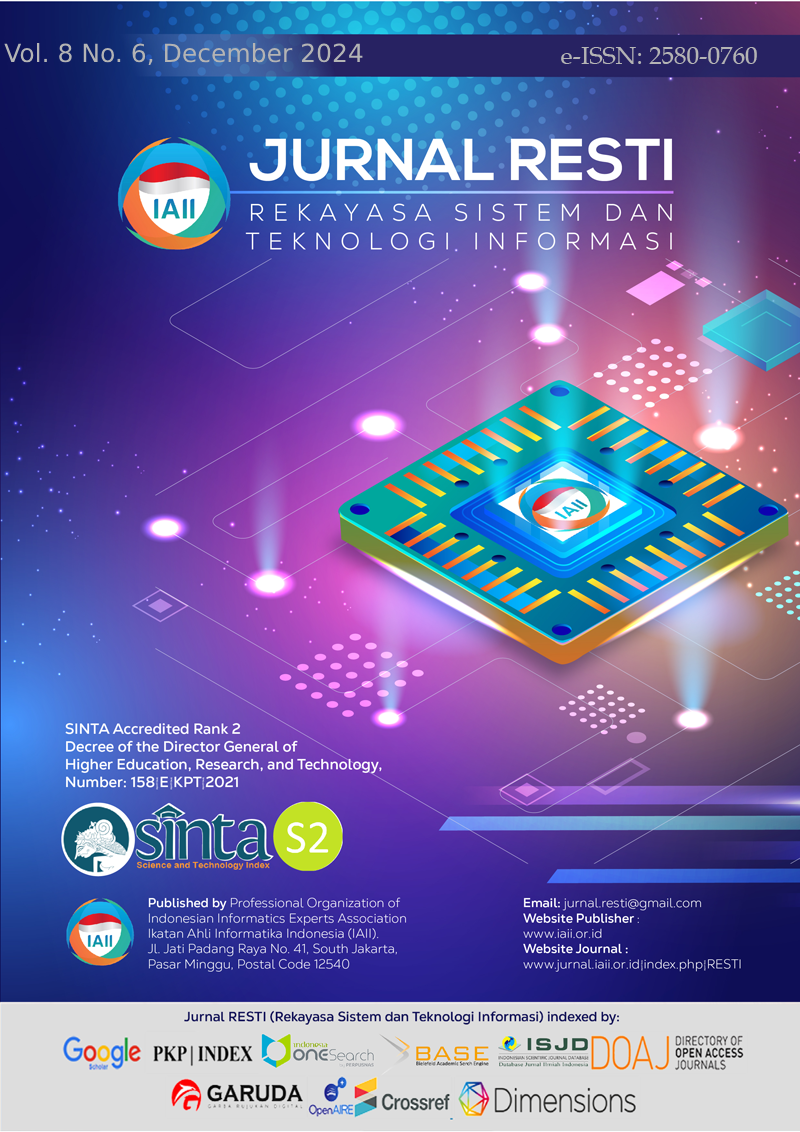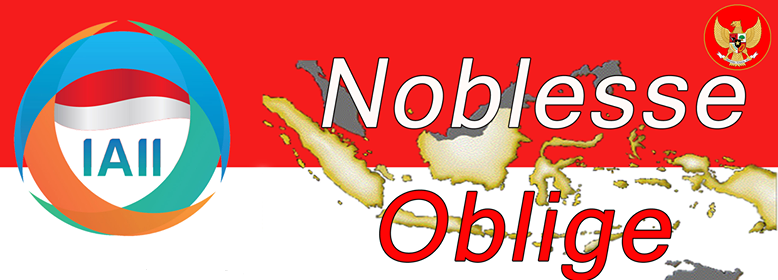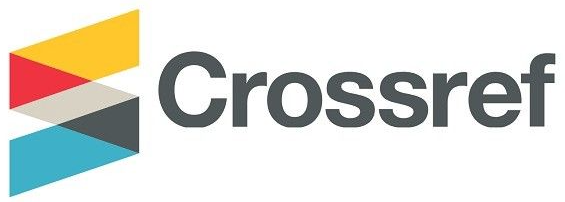Knowledge Management Foundation and Solutions Implementation in Indonesian Government Higher Educational Institution
Abstract
The performance of XYZ, a Government Higher Educational Institution (GHEI) in Indonesia is assessed through two unintegrated applications. The 2023 target performance was missed due to miscalculations outside applications while transforming large data amounts. Thus, business intelligence (BI) serves as a knowledge management (KM) tool to integrate those applications to achieve XYZ's target. Because BI is costly and has a 70% failure rate of development plans, a research model was evaluated to look at the current XYZ innovation capability for successful BI adoption from the KM foundation and KM solution implementation. This study used a quantitative method, employing a questionnaire for 94 civil servants and the partial least squares-structural equation model (PLS-SEM) for data analysis. Results indicate in the KM foundation, organizational (O) negatively influences KM process application (KMP) (β = -0.292, Pv = 0.010) while KM infrastructure (I) and process (P) positively influence KMP, but KM technology (T) does not. In KM solutions, KMP is proven to be linked to innovation capability when KM systems are lacking. Hence, several activities are suggested to activate T through T, O, P, and I. The model validated 80% of the hypotheses, laying the groundwork for future studies into which aspects of T strengthen innovation capabilities in GHEI.
Downloads
References
“Undang-Undang Republik Indonesia Nomor 5 Tahun 2014 Tentang Aparatur Sipil Negara.” Accessed: Feb. 25, 2024. [Online]. Available: https://peraturan.bpk.go.id/Details/38580/uu-no-5-tahun-2014
V. Biagi, R. Patriarca, and G. Di Gravio, “Business Intelligence for IT Governance of a Technology Company,” Data (Basel), vol. 7, no. 1, Jan. 2022, doi: 10.3390/data7010002.
“Peraturan Menteri Dalam Negeri Republik Indonesia Nomor 80 Tahun 2022 Tentang Statuta Institut Pemerintahan Dalam Negeri,” 2022.
“Peraturan Menteri Dalam Negeri Republik Indonesia Nomor 132 Tahun 2018 Tentang Tunjangan Kinerja Pegawai Dalam Negeri,” 2018.
IPDN Kampus Jakarta, “Laporan Kinerja Triwulan IV 2023 IPDN Kampus Jakarta,” 2023.
“Peraturan Menteri Keuangan Republik Indonesia Nomor 22/PMK.02/2021 Tentang Pengukuran Dan Evaluasi Kinerja Anggaran Atas Pelaksanaan Rencana Kerja Dan Anggaran Kementerian Negara/Lembaga,” 2021. [Online]. Available: www.jdih.kemenkeu.go.id
Becerra-Fernandez, Irma, Sabherwal, and Rajiv, “Knowledge Management,” 2015.
J. Zhao, “Knowledge management capability and technology uncertainty: driving factors of dual innovation,” Technol Anal Strateg Manag, vol. 33, no. 7, pp. 783–796, 2021, doi: 10.1080/09537325.2020.1841896.
U. Zia, J. Zhang, and S. Alam, “Role of tacit knowledge management process and innovation capability for stimulating organizational performance: empirical analysis, PLS-SEM approach,” Kybernetes, 2023, doi: 10.1108/K-03-2023-0444.
I. I. Smaradhani, A. V. S. Hubeis, and F. S. Hidayatulloh, “Knowledge Management Infrastructure on Organizational Performance in Indonesian Science Institutions (LIPI): Mediation Effects of Knowledge Management Process,” Jurnal Aplikasi Bisnis dan Manajemen, May 2023, doi: 10.17358/jabm.9.2.397.
A. Jalil, M. Arif, A. Ghani, H. Wahab, A. ’ Dillah Mustafa, and A. S. Shibghatullah, “A Preliminary Study on Knowledge Retention Strategy in Faculty of Information Management of UiTM,” 2023.
L. Lam, P. Nguyen, N. Le, and K. Tran, “The relation among organizational culture, knowledge management, and innovation capability: Its implication for open innovation,” Journal of Open Innovation: Technology, Market, and Complexity, vol. 7, no. 1, pp. 1–16, Mar. 2021, doi: 10.3390/joitmc7010066.
W. Bouaoula, F. Belgoum, A. Shaikh, M. Taleb-Berrouane, and C. Bazan, “The impact of business intelligence through knowledge management,” Business Information Review, vol. 36, no. 3, pp. 130–140, Sep. 2019, doi: 10.1177/0266382119868082.
H. Hmoud, A. S. Al-Adwan, O. Horani, H. Yaseen, and J. Z. Al Zoubi, “Factors influencing business intelligence adoption by higher education institutions,” Journal of Open Innovation: Technology, Market, and Complexity, vol. 9, no. 3, Sep. 2023, doi: 10.1016/j.joitmc.2023.100111.
I. Salisu, M. Bin Mohd Sappri, and M. F. Bin Omar, “The adoption of business intelligence systems in small and medium enterprises in the healthcare sector: A systematic literature review,” Cogent Business and Management, vol. 8, no. 1, 2021, doi: 10.1080/23311975.2021.1935663.
R. A. Williams, G. M. Duman, E. Kongar, and D. Tenney, “Understanding Business Intelligence Implementation Failure from Technology, Organization, and Process Perspectives,” IEEE Engineering Management Review, 2023, doi: 10.1109/EMR.2023.3331247.
H. Taherdoost, “What are Different Research Approaches? Comprehensive Review of Qualitative, Quantitative, and Mixed Method Research, Their Applications, Types, and Limitations,” Journal of Management Science & Engineering Research, vol. 5, no. 1, pp. 53–63, Apr. 2022, doi: 10.30564/jmser.v5i1.4538.
IPDN kampus Jakarta, “Institut Pemerintahan Dalam Negeri - Jakarta.” Accessed: Apr. 27, 2024. [Online]. Available: https://jakarta.ipdn.ac.id/?page_id=616
Wibowo Wahyu Setiawan, “Dari Kertas ke Digital: Memahami Penerimaan Pencacah Pada Adopsi Aplikasi Computer-Assisted Personal Interviewing Dalam Pengumpulan Data Di Badan Pusat Statistik,” 2023.
J. C. Acosta-Prado, O. H. López-Montoya, C. Sanchís-Pedregosa, and U. J. Vázquez-Martínez, “Sustainable Orientation of Management Capability and Innovative Performance: The Mediating Effect of Knowledge Management,” Sustainability, vol. 12, no. 4, p. 1366, Feb. 2020, doi: 10.3390/su12041366.
M. Ghasemy, I. M. Rosa-Díaz, and J. E. Gaskin, “The Roles of Supervisory Support and Involvement in Influencing Scientists’ Job Satisfaction to Ensure the Achievement of SDGs in Academic Organizations,” Sage Open, vol. 11, no. 3, 2021, doi: 10.1177/21582440211030611.
J. F. Hair, J. J. Risher, M. Sarstedt, and C. M. Ringle, “When to use and how to report the results of PLS-SEM,” Jan. 14, 2019, Emerald Group Publishing Ltd. doi: 10.1108/EBR-11-2018-0203.
G. Dash and J. Paul, “CB-SEM vs PLS-SEM methods for research in social sciences and technology forecasting,” Technol Forecast Soc Change, vol. 173, Dec. 2021, doi: 10.1016/j.techfore.2021.121092.
K. dan H. M. Kepala Biro Adm. Hukum, “Keputusan Rektor Nomor 800.2.3-270 Tahun 2024 Tentang Penunjukan Dosen dan Pelatih Mata Praktikum Semester Ganjil Program Sarjana Terapan Fakultas Manajemen Pemerintahan,” 2024.
R. Kumar, K. Singh, and S. K. Jain, “Agile manufacturing: a literature review and Pareto analysis,” Jan. 14, 2020, Emerald Group Holdings Ltd. doi: 10.1108/IJQRM-12-2018-0349.
Copyright (c) 2024 Jurnal RESTI (Rekayasa Sistem dan Teknologi Informasi)

This work is licensed under a Creative Commons Attribution 4.0 International License.
Copyright in each article belongs to the author
- The author acknowledges that the RESTI Journal (System Engineering and Information Technology) is the first publisher to publish with a license Creative Commons Attribution 4.0 International License.
- Authors can enter writing separately, arrange the non-exclusive distribution of manuscripts that have been published in this journal into other versions (eg sent to the author's institutional repository, publication in a book, etc.), by acknowledging that the manuscript has been published for the first time in the RESTI (Rekayasa Sistem dan Teknologi Informasi) journal ;







